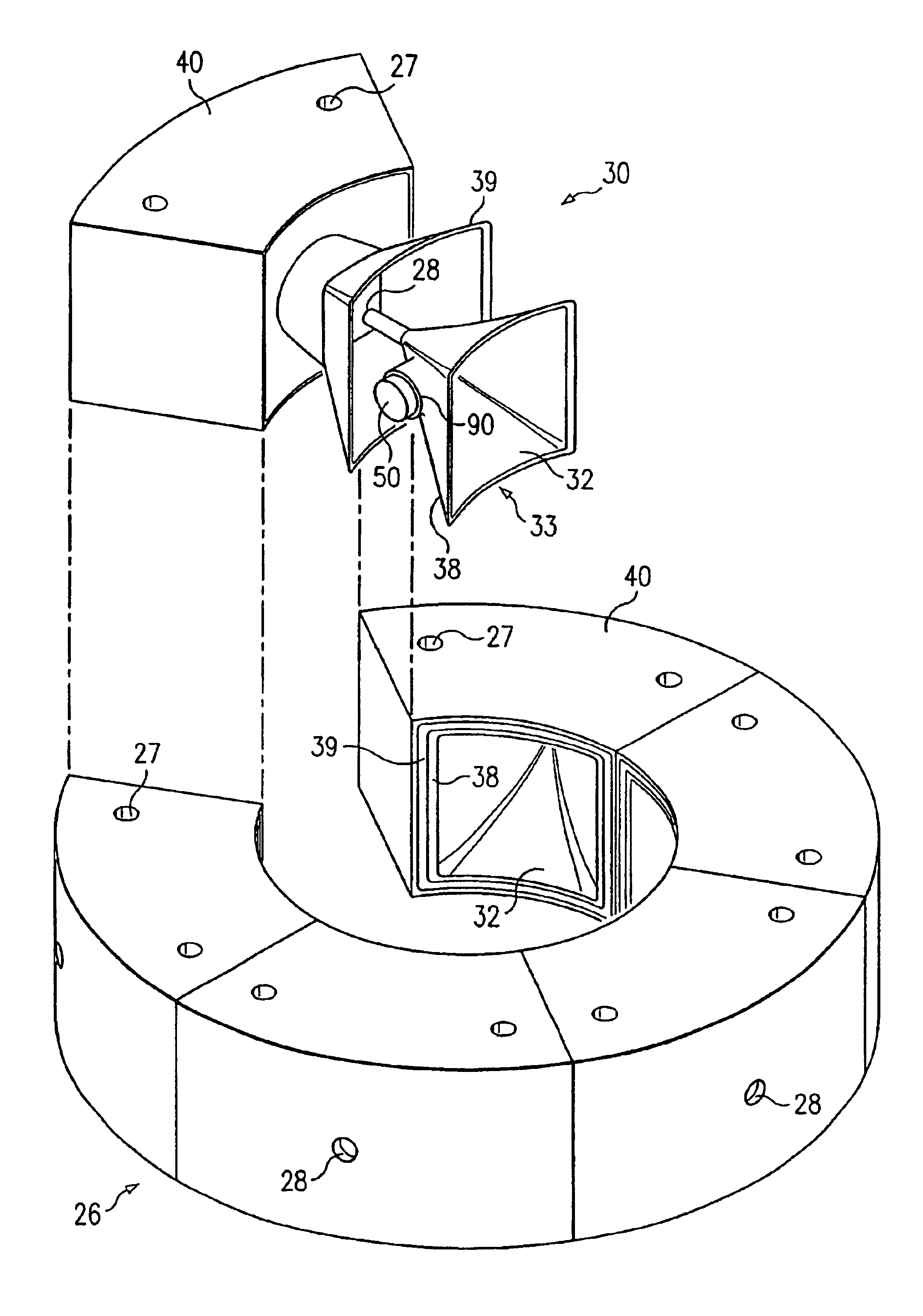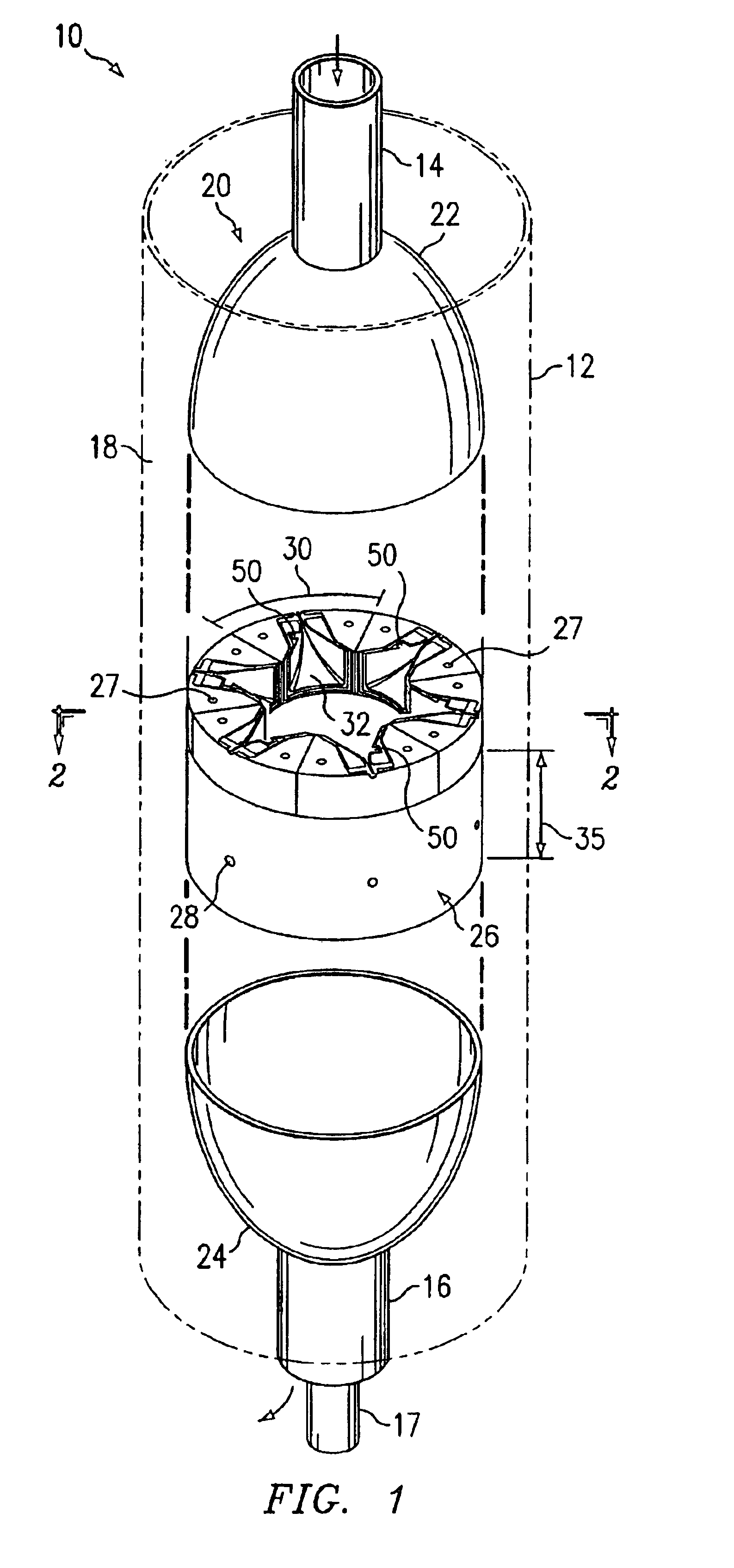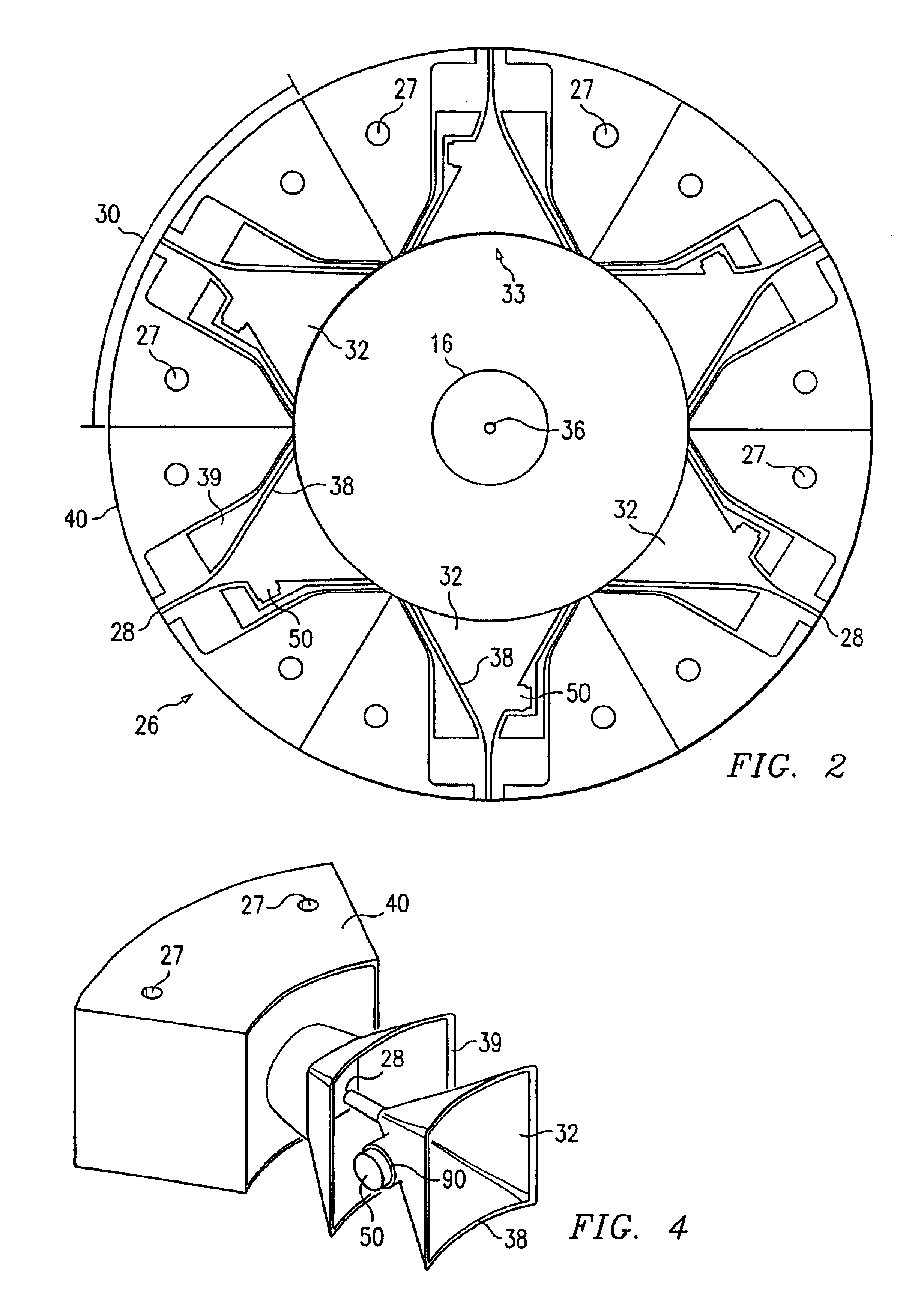Method for vibration in a centrifuge
a centrifuge and centrifuge technology, applied in centrifuges, filtration separation, separation processes, etc., can solve the problems of preventing the movement of contaminants towards the openings, many light density contaminants, and often not being removed, so as to reduce the friction effect of the receptacle wall, prevent or reduce the compacting of more dense materials, and reduce the effective frictional force
- Summary
- Abstract
- Description
- Claims
- Application Information
AI Technical Summary
Benefits of technology
Problems solved by technology
Method used
Image
Examples
Embodiment Construction
[0029]Preferred embodiments of the present invention and their advantages are best understood by reference to FIGS. 1 through 11D where like numbers are used to indicate like and corresponding parts.
[0030]FIG. 1 illustrates a schematic drawing showing an isometric view with portions broken away of centrifuge 10. Centrifuge 10 may include centrifugal core 20 disposed within non-rotating outer sleeve 12. Centrifugal core 20 may include fluid medium inlet 14, clarified fluid outlet 16, and fluid separation wall 26. Fluid separation wall 26 may be encapsulated between first housing cover 22 and second housing cover 24.
[0031]Non-rotating outer sleeve 12 may form accumulation area or containment zone 18 between centrifugal core 20 and non-rotating outer sleeve 12. Accumulation area 18 may collect more dense material and other contaminants that have been separated from the fluid medium and have passed through openings 28. More dense material and other contaminants that have collected withi...
PUM
| Property | Measurement | Unit |
|---|---|---|
| frequency | aaaaa | aaaaa |
| size | aaaaa | aaaaa |
| frequency | aaaaa | aaaaa |
Abstract
Description
Claims
Application Information
 Login to View More
Login to View More - R&D
- Intellectual Property
- Life Sciences
- Materials
- Tech Scout
- Unparalleled Data Quality
- Higher Quality Content
- 60% Fewer Hallucinations
Browse by: Latest US Patents, China's latest patents, Technical Efficacy Thesaurus, Application Domain, Technology Topic, Popular Technical Reports.
© 2025 PatSnap. All rights reserved.Legal|Privacy policy|Modern Slavery Act Transparency Statement|Sitemap|About US| Contact US: help@patsnap.com



